
"One of the chiefs took a vessel we had, filled it with soil and asked us to bring that vessel back to the site of the slave ship so that, for the first time since the 18th century, his people could sleep in their own land," says Lonnie Bunch, now secretary of the Smithsonian.
For Bunch and his colleagues, the importance of the find cannot be overstated. Although the São José - which was bound for Brazil - is the first ship to be recovered that is known to have sunk while transporting enslaved people, it was just one of the tens of thousands that plied their trade over the four centuries of the transatlantic slave trade, during which more than 12 million African men, women and children were enslaved.
And yet, as Bunch points out, maritime archaeology has tended to focus its masked eye on the wrecks of rich and famous ships rather than those that traded in flesh and blood.
Redressing that archaeological, academic and sociocultural imbalance was the driving force behind the Slave Wrecks Project, a partnership established in 2008 between the Smithsonian's National Museum of African American History and Culture (NMAAHC) and other institutions and organisations in Africa and the US.
"People talk about the slave trade; they talk about the millions of people who were transported, but it's hard to really imagine that, so we wanted to reduce it to human scale by really focusing on a single ship, on the people on the ship, and the story around the ship," says Bunch. "Yes, we tell you about the thousands of ships that brought the enslaved, but we also say: 'Here's a way to humanise it.""
This story is from the {{IssueName}} edition of {{MagazineName}}.
Start your 7-day Magzter GOLD free trial to access thousands of curated premium stories, and 9,000+ magazines and newspapers.
Already a subscriber ? Sign In
This story is from the {{IssueName}} edition of {{MagazineName}}.
Start your 7-day Magzter GOLD free trial to access thousands of curated premium stories, and 9,000+ magazines and newspapers.
Already a subscriber? Sign In
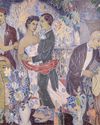
Finn family murals
The optimism that runs through Finnish artist Tove Jansson's Moomin stories also appears in her public works, now on show in a Helsinki exhibition
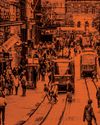
I hoped Finland would be a progressive dream.I've had to think again Mike Watson
Oulu is five hours north from Helsinki by train and a good deal colder and darker each winter than the Finnish capital. From November to March its 220,000 residents are lucky to see daylight for a couple of hours a day and temperatures can reach the minus 30s. However, this is not the reason I sense a darkening of the Finnish dream that brought me here six years ago.

A surplus of billionaires is destabilising our democracies Zoe Williams
The concept of \"elite overproduction\" was developed by social scientist Peter Turchin around the turn of this century to describe something specific: too many rich people for not enough rich-person jobs.

'What will people think? I don't care any more'
At 90, Alan Bennett has written a sex-fuelled novella set in a home for the elderly. He talks about mourning Maggie Smith, turning down a knighthood and what he makes of the new UK prime minister

I see you
What happens when people with acute psychosis meet the voices in their heads? A new clinical trial reveals some surprising results
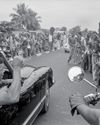
Rumbled How Ali ran rings around apartheid, 50 years ago
Fifty years ago, in a corner of white South Africa, Muhammad Ali already seemed a miracle-maker.

Trudeau faces 'iceberg revolt'as calls grow for PM to quit
Justin Trudeau, who promised “sunny ways” as he won an election on a wave of public fatigue with an incumbent Conservative government, is now facing his darkest and most uncertain political moment as he attempts to defy the odds to win a rare fourth term.
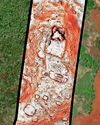
Lost Maya city revealed through laser mapping
After swapping machetes and binoculars for computer screens and laser mapping, a team of researchers have discovered a lost Maya city containing temple pyramids, enclosed plazas and a reservoir which had been hidden for centuries by the Mexican jungle.
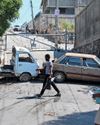
'A civil war' Gangs step up assault on capital
Armed fighters advance into neighbourhoods at the heart of Port-au-Prince as authorities try to restore order

Reality bites in the Himalayan 'kingdom of happiness'
High emigration and youth unemployment levels belie the mountain nation's global reputation for cheeriness